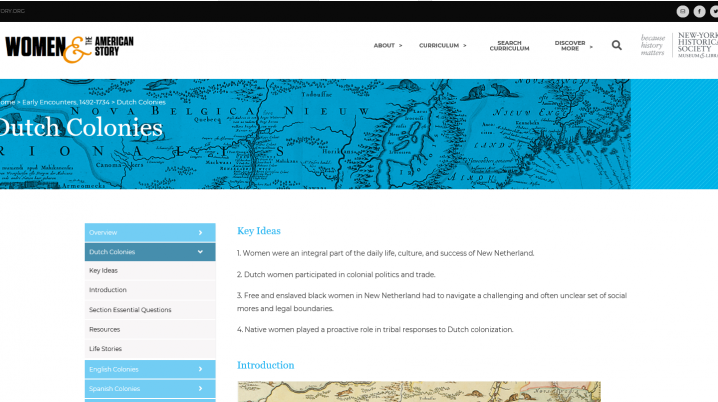
USA: New-York Historical Society launches Women’s Curriculum
Fittingly launched on International Women’s Day, the free curriculum guide is designed to connect educators with resources that illuminate women’s contributions to the American past. At a time when only 13 percent of the historical figures in American history textbooks are women, the site is the first comprehensive, digital women’s history resource for schools across the U.S. The new website wams.nyhistory.org features primary sources, historical background essays, engaging biographies, and classroom activities that cover the roles women played during early encounters in American history (1492–1734). Designed for teachers and students, the web resource is freely accessible and relevant for anyone interested in learning more about women across the spectrum of US society and history.
Early Encounters
The Early Encounters unit covers the period of 1492–1734 and provides resources to allow teachers to easily discover the history of women in the early colonial period and then integrate them into your lessons plans. The unit is organized into four sections based on the four major empires that colonized the Americas in this period - Dutch, English, Spanish, and French. The resources in each section illustrate the experiences of a wide range of women across race, gender, age, social, and economic spectrums.
Dutch colonial women
Women were an integral part of the daily life and success of New Netherland. They served as translators between the Dutch government and the local Native tribes, and acted as liaisons during negotiations with enemy forces. Women were at the centre of the colony’s struggle to define the terms of slavery and freedom for the black colonials who lived in the territory. Dutch women actively participated in the bustling trade in the colony, while Native women manipulated imperial power structures to ensure their own survival. And all women in New Netherland contributed to the survival of the colony while still carrying out the responsibilities of home and child care.
See the curriculum here.
This programme is supported as part of the Dutch Culture USA programme by the Consulate General of the Netherlands in New York.

